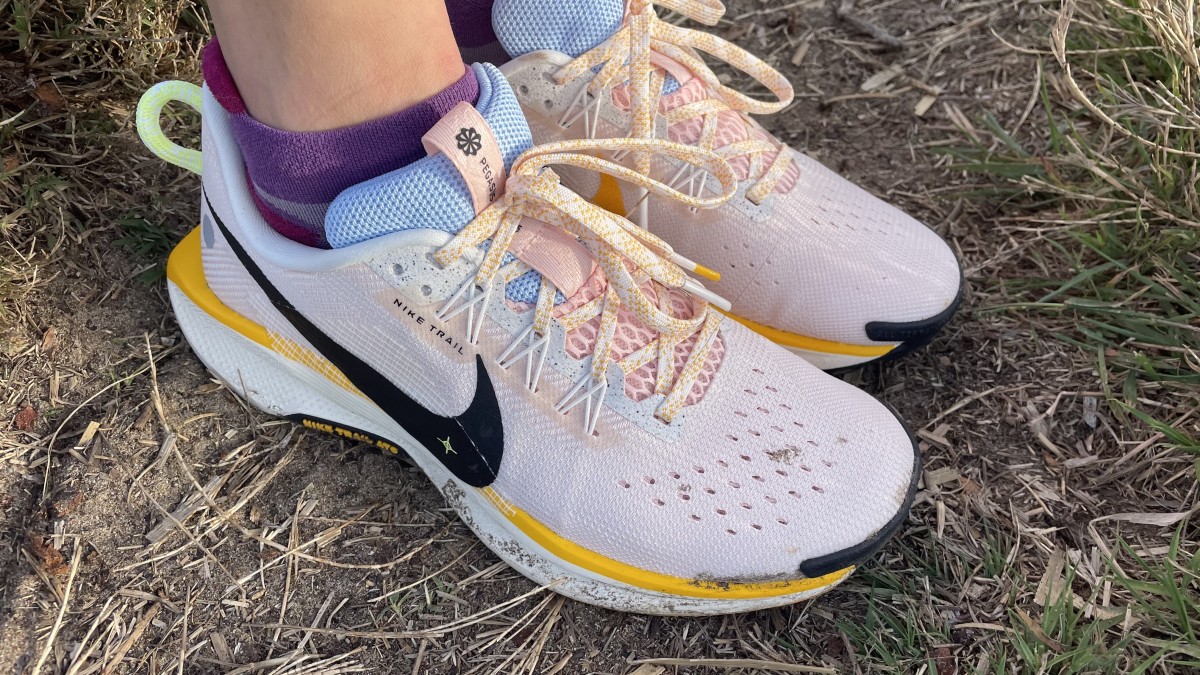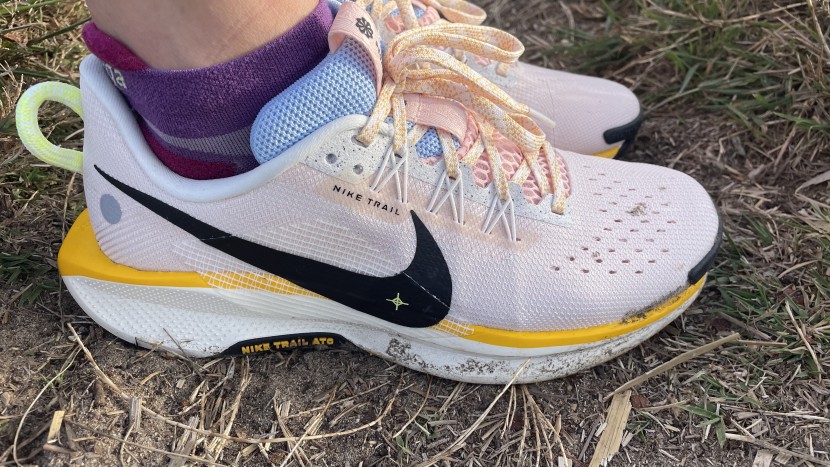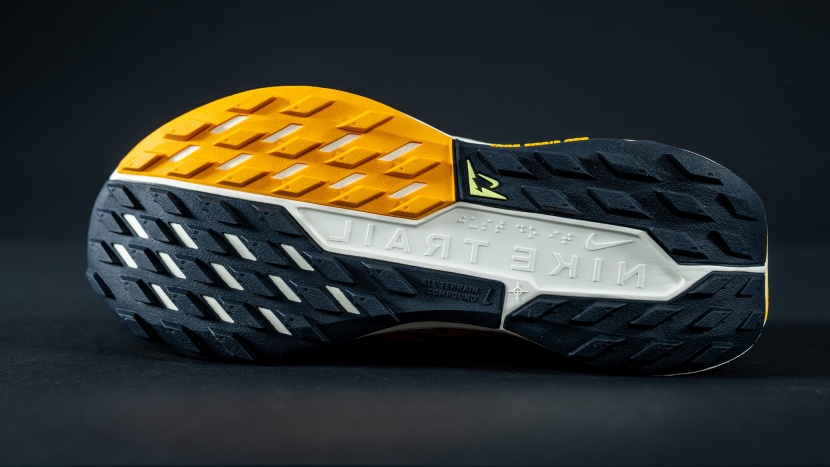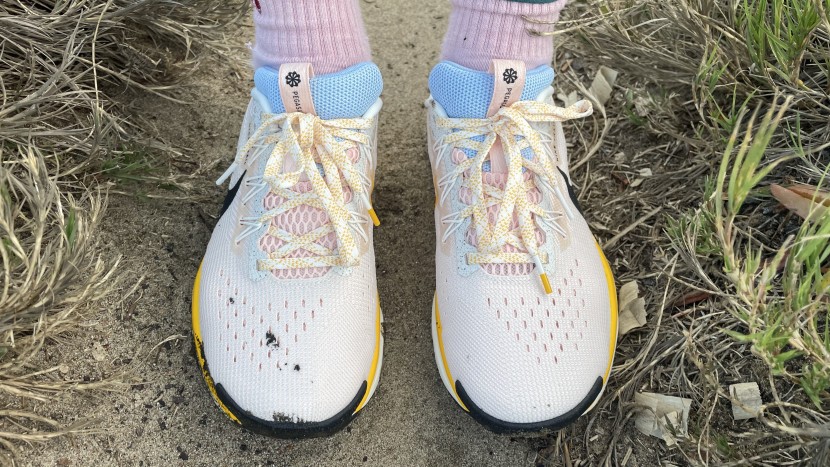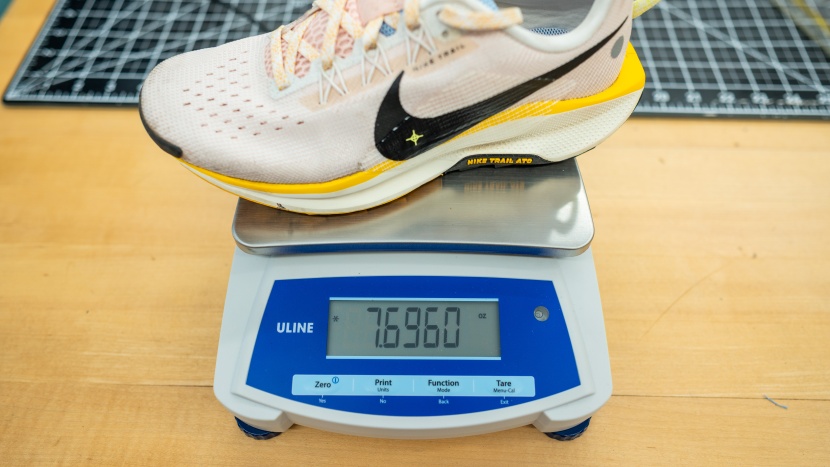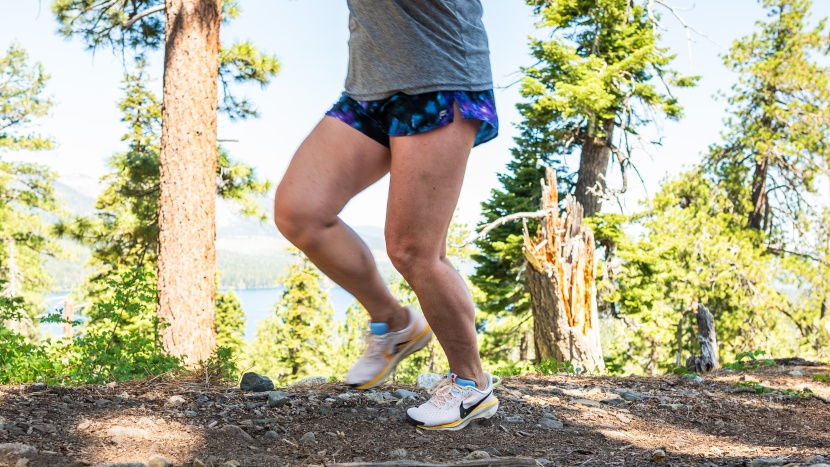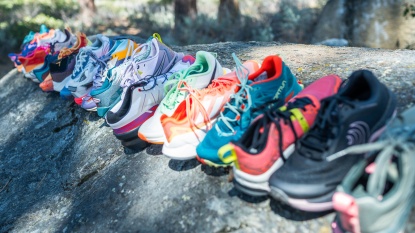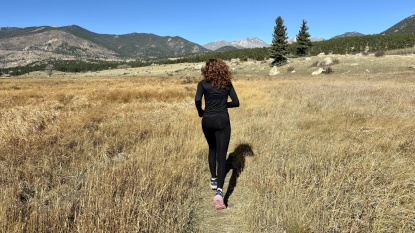Nike Pegasus Trail 5 - Women's Review

Our Verdict
Our Analysis and Test Results
The Nike Pegasus Trail 5 weighs in at 7.70 ounces per women's size 6.5 shoe, and offers a comfortable 31 mm stack in the heel. Comfortable throughout, this shoe is a bit soft for tackling technical terrain, though it is far superior to previous iterations.
Comfort and Fit
The updated Pegasus Trail is comfier than versions past, offering notable plushness through the heel and around the heel collar. The forefoot is rather low volume, which won't be everyone's cup of tea. The upper textile is forgiving and lacks structure, but is almost too soft for some runners. Our early and short testing runs felt great, but once testing run distances stretched the five-mile mark, we could feel hotspots forming on the outer edges of our feet. While this may not be an issue for all runners' specific foot shapes, it definitely pulls the Pegasus Trail out of contention as a top-performer for the masses.
As mentioned, the rear of the Pegasus Trail 5 is plush and comfortable. The plushness detracts from the shoe's trail prowess, ultimately making it a better choice for mild to moderate trails. Runners seeking a shoe fit for mild trail running will find success in the updated Pegasus.
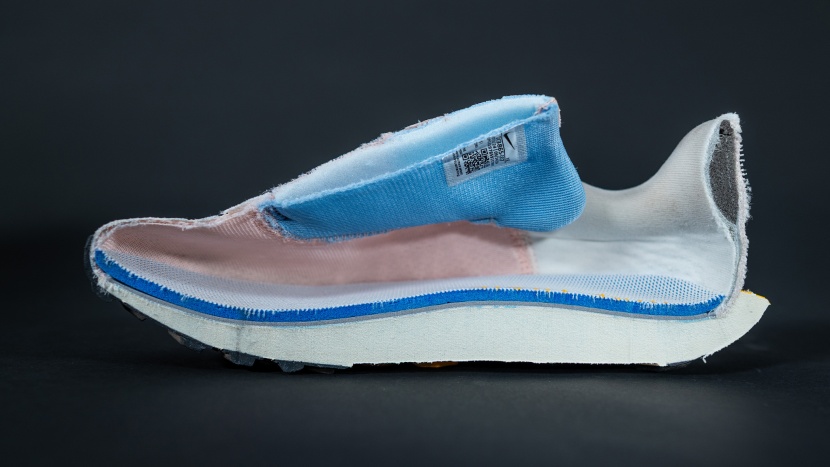
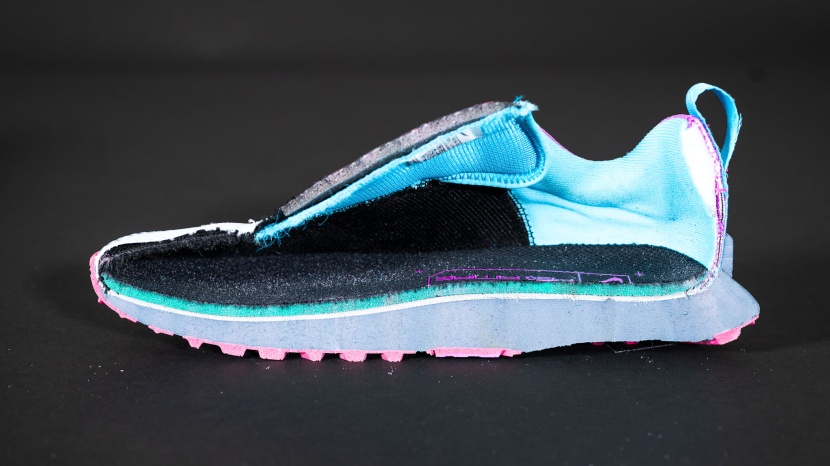
Stability
The Nike Pegasus Trail 5 isn't an unstable shoe. It doesn't offer as much stability as runners taking on varied terrain might appreciate, though. The softness through the midsole can feel a bit unstable, especially for runners who tend to roll inward. The last version of the Pegasus has a firmer platform that felt a bit more stalwart during movement; it seems as though the comfort upgrades came at the cost of ground-hugging stability. That said, there isn't anything inherently wrong with the stability of this shoe. In fact, the ground feel through the forefoot helps provide a level of control that helps keep joints moving in sync.
Traction
While not outfitted with a robust traction pattern, the Nike Pegasus Trail 5 offers moderate 3.5 mm deep lugs. The diamond-shaped lugs are equally spaced across the shoe's All Terrain Compound outsole. This design is ideal for runners who envision themselves enjoying meandering neighborhood trails, paths, and gravel walkways. While the stack and ride of the shoe is best-suited for heel strikers, the sensitivity of the forefoot offers loads of trail information, helping runners steer as they stride. If you plan to run mild trails and want a shoe that feels comfortable on paved surfaces as well, the new version of the Pegasus is worth taking for a spin.
Foot Protection
Though this version of the Pegasus Trail is mildly more protective than its predecessor, it still falls short in this metric. Understandably so, as Nike states that this shoe is built for mild trails, not necessarily rocky, granite outcroppings. The 31 mm total heel stack balances well with its soft midfoot for protection, but the forefoot, which rides at 22 mm, feels incredibly close to the ground. The low-to-the-ground nature of this build, combined with the underfoot softness and lack of a rock plate, inhibits most of the would-be underfoot protection. The Pegasus doesn't have a toe cap, and its upper weave is more porous than most. If you plan to run on mild trails and gravel paths, the protection offered here is adequate.
Weight
Each women's size 6.5 Pegasus Trail weighs 7.70 ounces. This is fairly lightweight in the world of trail shoes, and it feels light during runs. Nike was able to keep this shoe light by omitting protective and traction-focused features, resulting in a nimble-feeling, mild trail-tackling shoe.
Should You Buy the Nike Pegasus Trail 5?
Even though the Pegasus Trail 5 doesn't stand out among other trail running shoes, it presents a strong value when it comes to footwear. Its price rests towards the lower end of the bunch, which can often be a make-or-break factor when making a purchase. This shoe is ideal for runners who want an everyday shoe that is trustworthy enough to wear on light trails. Runners who want to up their trail running game will find that the Pegasus doesn't quite have enough power behind it.
What Other Trail Running Shoes Should You Consider?
If the Pegasus Trail as a crossover pavement-to-trail shoe is what appeals to you, the Hoka Challenger 7 would be another shoe to look into. With slightly more rugged capability, the Challenger offers solid underfoot cushion, making it appropriate for paved surfaces. Similarly, though differently priced, the Hoka Tecton X 3 offers underfoot cushion that is worthy on both road and trail. If you know you'll be tackling tougher trails, or hope to in the future, The North Face Vectiv Enduris 4 is a versatile trail running shoe that we can't stop raving about.
| Awards | |
|---|---|
| Price | $155 List Check Price at Backcountry |
Overall Score  |
|
| Star Rating | |
| Bottom Line | If a daily trainer that crosses over into light trail territory is what you're after, this is a shoe worth considering |
| Pros | Good sensitivity, plush tongue, everyday functional traction, stylish |
| Cons | Low traction in sloppy conditions, lacks protective features |
| Rating Categories | Nike Pegasus 5 |
| Comfort and Fit (40%) | |
| Stability (25%) | |
| Traction (15%) | |
| Foot Protection (15%) | |
| Weight (5%) | |
| Specifications | Nike Pegasus 5 |
| Measured Heel Stack Height | 31 mm |
| Measured Heel-to-Toe Drop | 9 mm |
| Rock Plate | No |
| Measured Lug Depth | 3.5 mm |
| Measured Weight | 7.70 oz |
| Upper | Mesh |
| Midsole | ReactX foam |
| Outsole | All Terrain Compound (ATC) |
| Sizes Available | 5 - 12 US regular |
| Heel Tab Type | Finger loop |
| Claimed Heel-to-Toe Drop | 10 mm |


